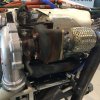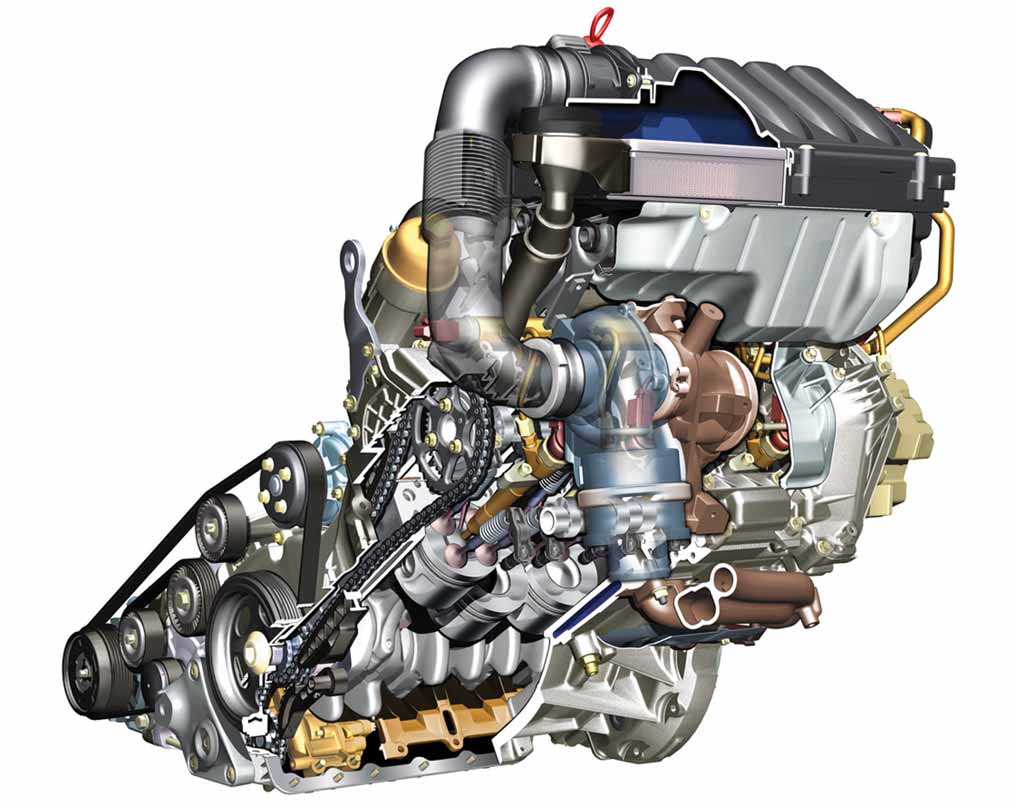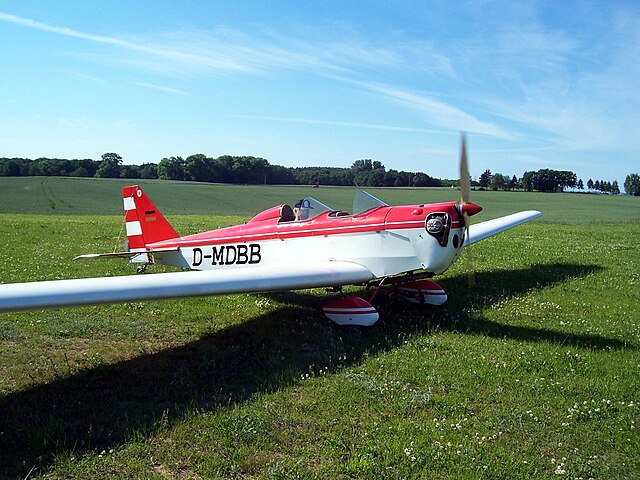Timbeck2
Final Approach
Um, disagree. Vehemently.
The "whistle" sound wasn't coming from the engine. (which for the sake of this thread, was a V-12 and water cooled) It came from the inner most and recessed gun ports.
Um, disagree. Vehemently.
The "whistle" sound wasn't coming from the engine. (which for the sake of this thread, was a V-12 and water cooled) It came from the inner most and recessed gun ports.
And dont forget, water cooled engines have to have water jackets. So their engine blocks are heavier.
It also appears that whenever Viking comes up in a forum, somebody has to mention that his former Subaru conversion company went belly up and that he left unhappy customers behind. And, of course, there has to be a reference to the Yahoo forum, in which nothing but the "truth" is being discussed: The Yahoo forum is pretty much dead, and the main purpose of the little bit of activity was apparently to badmouth whatever he does.
Not so much discounting air as a cooling agent, just that oil (and fuel) seem to be as important. But, I'm not an engineer; maybe one could chime in, regarding the cooling factors in GA recips?You're severely discounting the importance of the air in the equation here. You can easily see 50-100F differences in CHTs between good baffles and bad baffles on the exact same airframe. BTDT many times.
Mixture setting and oil cooling matter as well, but air is by far the most important factor in the equation.
And dont forget, water cooled engines have to have water jackets. So their engine blocks are heavier.
I'm sure you can find an example showing that, but the firewall forward package for a 100 hp Rotax weighs less than the competitive products from Continental and Lycoming.
As I recall, Rotax has water cooled heads and air cooled cylinders so the first statement still holds true.
Soon...The water cooled version of Rotax engines also don't fly in the flight levels.
Not so much discounting air as a cooling agent, just that oil (and fuel) seem to be as important. But, I'm not an engineer; maybe one could chime in, regarding the cooling factors in GA recips?
Why would Rotax choose the higher RPM/reduction model if the 'best' purpose built design(the classic lycoming/continentals) syncs engine rpm to prop limitations?
If direct drive is "best" why did Lycoming, Continental and Pratt&Whitney (and others) choose to build engines with gear reductions?Why would Rotax choose the higher RPM/reduction model if the 'best' purpose built design(the classic lycoming/continentals) syncs engine rpm to prop limitations?
Because every manufacturer makes mistakes?If direct drive is "best" why did Lycoming, Continental and Pratt&Whitney (and others) choose to build engines with gear reductions?
Tons of V-8 powered aircraft around that make the rounds at the various airshows and fly-ins. Like this one... you have to admit, this sounds almost as good as the real one.

I'm sure the challenge of cutting weight in a diesel is quite the difficult task. They run at much higher internal pressures, which necessitates stronger (usually heavier) components than the gasser counterparts.
Second, is the fact that there's almost no payback in trying to get a new diesel powerplant certified as a replacement for existing airframes. The demand just isn't there for anyone who has 100LL available.
So, that leaves you with trying to build/design a compression ignition engine for use in an aircraft that hasn't been certified yet. Pretty small market reduced to an even smaller market.
Final answer: despite the obvious challenges in shedding enough weight, the lack of demand for new piston singles pretty much explains why so few are even interested in making an attempt.





The Austro AE300 is a modified Mercedes-Benz OM640 engine that they use in some of their European market cars (Mercedes USA diesels are V6's).Exhibit 4: I rather like this serpentine belt; seems an elegant, low power loss solution. In addition to the crankshaft drive pulley this assembly has 5 more, 3 idlers (manual tensioner) and two accessory for the coolant pump and the alternator. Looks pretty robust but a belt or idler bearing failure will result in loss of coolant flow and no amount of "richening the mixture" is likely to help the resulting situation.

Tons? Really...Tons of V-8 powered aircraft around that make the rounds at the various airshows and fly-ins...
Go to EAA Oshkosh this year. Count up the number of V-8 auto engine powered experimental airplanes on the field. Calculate what fraction that represents of the total experimental registrations. Then see if you still think there are "tons".
Why?Im putting a HARLEY engine in MY airplane!
Well, because its air cooled for starters (depending on the Harely). I always thought bike engines would be better than car engines because a lot of bike engines are indeed air-cooled (no radiator). Moreover, they tend to be lighter since bikes tend to be lighter. The most widely used car engines, VW's and Corvairs, are also air-cooled. Gets rid of one heavy system to break.Why?
Why?
The question is not how many built using a car engine but how many are flying regulary with one. Likely none to few.
Well, because its air cooled for starters (depending on the Harely). I always thought bike engines would be better than car engines because a lot of bike engines are indeed air-cooled (no radiator). Moreover, they tend to be lighter since bikes tend to be lighter. The most widely used car engines, VW's and Corvairs, are also air-cooled. Gets rid of one heavy system to break.
Were I to try such a thing I might look to the parallel fours that powered the Honda CB750's, but I suspect their power output to be on the anemic side.
So you think the 2800 aircraft mentioned earlier are all grounded?
Cheers
There were roughly 28,000 homebuilt aircraft on 1 Jan 2016. About 1600 of them (~5.7%) were registered as having auto engines.
In addition, there are almost 4,000 aircraft which are listed as having an "AMAT/EXP" engines. I've used NTSB accident records to attempt to extract the percentages of given engine types, and estimate about a quarter of them are auto derivatives. Hence, I estimate about 2800 (about 10% of the fleet) homebuilts are powered by auto engines.
Now...how many V-8s? Of those 2800 engines, more than eighty percent are Volkswagens, Subarus, Hondas, or Corvairs.
350 aircraft have GM (non-Corvair) or Ford engines. Some percentage of them are V-8s, but similarly, some are V-6s or even straight 4s (Model A engines in Pietenpols, for example).
My WAG (based on scanning engine types in accident records) is that, probably, around half of those 350 aircraft may have V-8 engines. How many are actually flying? Don't really know. The FAA estimates that 40% of registered homebuilts are inactive.
Whether this represents a "Ton" (in other than the avoirdupois sense) is left as an exercise for the reader.
Ron Wanttaja
Takes a large experimental airframe to accommodate a V-8 derivative. Few of those available, and of those that are they are built in comparatively small numbers - generally daunting, expensive, complex projects to assemble. I have an acquaintance who lives nearby who owns an experimental bush plane with an Orenda V-8. That thing is massive, about the size of a Beaver. It's a one-off with that engine.
How about the horizontally opposed (boxer) BMW bike engines I remember from the 1960s & 1970s? I don't recall ever seeing anyone try to use one of those in an experimental, even though the form factor is similar to conventional certified aircraft piston engines.
That would be interesting, especially given BMW's origins as an aircraft engine maker.

Cool write up and great pictures. I'm afraid to ask though why it needs tethers...The next picture shows one of the steel cable engine tethers.
Cool write up and great pictures. I'm afraid to ask though why it needs tethers...
P.S. - why the 1,3,2,4 firing order?
That is somewhat disconcerting... I guess we'll see how the fleet ages and if engine departure ever actually does occur. I would think having a dangling engine there (possibly still running) would be worse than just losing the whole thing, but then of course your weight and balance is severely upset so lesser of two evils I supposePresumably there is some concern about engine mount failure from the stresses or vibration being imposed by the Diesel engine.
Thanks, between those two options number 2 does sound worse, but I'll have to do some more research about why you couldn't (or wouldn't want to) have say 1,4,2,3 order so I can better understand. I remember reading a while ago that firing order was also the reason that 6 cylinder engines were more "smooth" than 8 cylinder engines, despite there being less cylindersbasically for a flat 4 you have to either:
1) Have two cylinders on one side fire followed by two cylinders on the other side
2) Have all pistons move in the same direction at the same time
